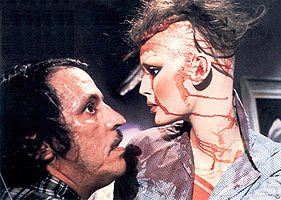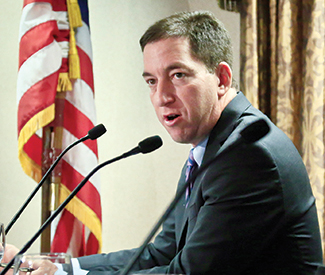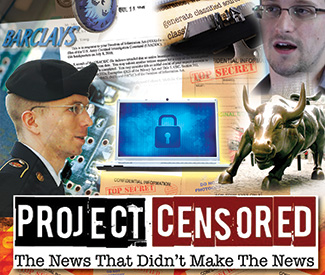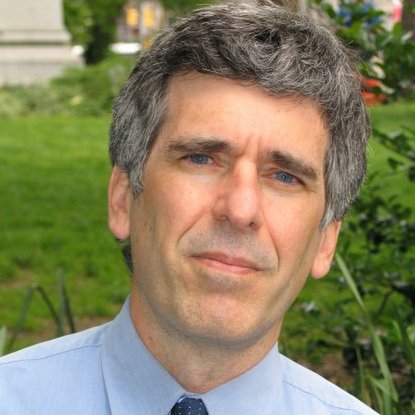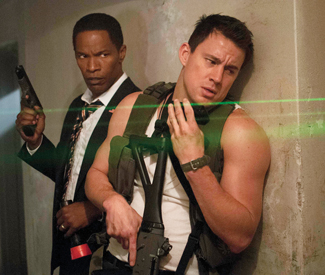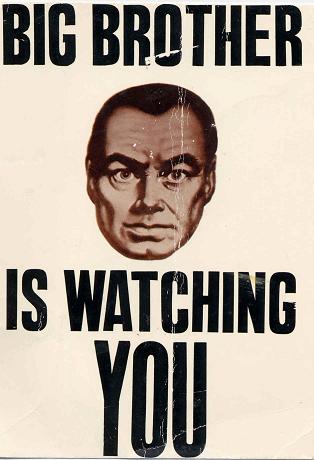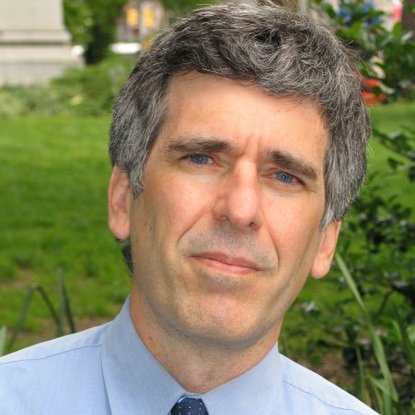Film listings are edited by Cheryl Eddy. Reviewers are Kimberly Chun, Dennis Harvey, Lynn Rapoport, and Sara Maria Vizcarrondo. For rep house showtimes, see Rep Clock.
OPENING
The Expendables 3 Stallone and company return for another aging-action-stars-kick-ass extravaganza. New faces include Antonio Banderas, Wesley Snipes, Mel Gibson, and Harrison Ford. (2:07)
Finding Fela Having taken on Enron, WikiLeaks, Hunter S. Thompson, Ken Kesey, Eliot Spitzer, and Lance Armstrong, documentarian Alex Gibney (an Oscar winner for 2007 torture exposé Taxi to the Dark Side) turns his attentions to yet another fascinating figure: Afrobeat pioneer and political activist Fela Kuti. Finding Fela incorporates the making of Bill T. Jones’ Tony-winning musical Fela! into its tale of the late lightning rod, but footage of the real Kuti is more compelling than any staged recreation; his performances at Lagos nightclub the Shrine are legendary, and rightfully so, as we see here. But despite its dynamic, complicated subject — being a musical visionary would be doc-worthy enough, but he was also regularly persecuted by the Nigerian government, and was both free-living polygamist (with some regressive views on women’s rights) and spiritual explorer — Finding Fela is disappointingly conventional, presenting the expected mix of vintage clips and contemporary interviews (with Kuti’s children and fellow musicians, among others). Enlightening, but not essential. (2:00) Embarcadero, Shattuck. (Eddy)
The Giver Lois Lowry’s classic YA novel gets a veteran helmer for its big-screen adaptation, but Philip Noyce’s ability to attract top adult talent (Meryl Streep, Jeff Bridges) can’t outweigh his heavy-handed interpretation of what was never a subtle work to begin with. In a vaguely post-apocalyptic society so regulated and dulled that nobody has emotions or empathy, a young man named Jonas (Maleficent‘s Brenton Thwaites, bumped up in age from the book’s 11-year-old) is tasked with becoming the “receiver of memories.” Basically this means that he gets to hang out with Bridges’ character and learn things about the world and human history in the form of Koyaanisqatsi-meets-National Geographic montages (music — it’s a thing! Also: war is hell, etc.) This is life-changing stuff, but part of the deal is that he must never, ever tell anyone else about it, at least until he’s as grizzled as Bridges and has his own successor in need of a thorough mind-blowing. Of course, he immediately loops in pretty BFF Fiona (Odeya Rush), who he’s been seeing in a new light since catching wind of a concept called “love.” Soon, his awakening draws the ire of his mother-esque guardian (Katie Holmes), as well as the community’s leader (Streep). If you’re looking for suspense, or any curve balls (duuuude … once Jonas’ mind starts expanding, he starts seeing the black-and-white world in color!), best backtrack to one of Noyce’s 1990s thrillers (1992’s Patriot Games, perhaps). About the only surprise in The Giver is that Taylor Swift’s much-hyped role is smaller than expected, and not nearly as distracting. (1:40) (Eddy)
Kink Itching for more than the run-of-the-mill tour behind the forbidding doors of the Armory? Kink.com may seem like old news to Missionites, but fewer still have, ah, penetrated the actual sanctum sanctorums of BDSM videos in production. Director Christina Voros teams up here with producer James Franco, for whom she served as cinematographer on As I Lay Dying, to look in on the process and some of the issues and personalities behind Kink’s brand of porn, and attempts to make her way through the tangled complex of desire that seems to parallel both the Armory’s fortress and the city’s labyrinthine counterculture. Ever wonder how to step on a penis without eliciting a scream — be it from pleasure or pain? We learn that and look in on former farm boy turned porn star and director Van Darkholme in action, teaching his dom how to pummel his sub hard enough to deliver a satisfying thump but not hurt. Meanwhile, other filmmakers go to town in ways that should press more than a few buttons when it comes to, say, rape fantasies. Pungent stuff, complete with full frontal male and female nudity and explicit acts with sanders and the like, although Kink would have only been better with a more honed focus on the humans behind the mechanical phalluses. Voros is obviously on Team Kink, though the multiple on-camera quasi-apologies regarding BDSM culture in general give the appearance of players and pornographers protesting a smidge too much. (1:19) Roxie. (Chun)
Let’s Be Cops Another buddy cop comedy — except this time, the cops (Jake Johnson and Marlon Wayans Jr.) are faking it. (1:44)
ONGOING
Alive Inside A form of music therapy pioneered by New York social worker Dan Cohen finds a strong advocate in filmmaker Michael Rossato-Bennett, whose documentary Alive Inside benefits greatly from its awesomely cinematic results. The method is simple: provide patients who have suffered memory loss with iPods stocked with music that has personal meaning for them, and inevitably they will temporarily “awaken,” with joyful results. The before-and-afters are intensely moving: the man with dementia who sparks with his healthy wife, to her teary-eyed delight, as they listen to the Shirelles; the middle-aged woman whose frustration with her forgetfulness is soothed by a much-needed dose of the Beach Boys. And it’s not just the pleasure of hearing the music, Alive Inside suggests; it’s the regained sense of identity and emotion that music triggers in people whose memories have been essentially wiped clean. Rossato-Bennett widens his focus to include neurology — Dr. Oliver Sacks explains how music is “a back door into the mind” for patients with Alzheimer’s and related diseases — and the history of (and decline of) American elder care. But Alive Inside‘s delighted chronicling of its own viral origins — a Reddit-circulated clip of one elderly man’s gospel rejuvenation — caps the movie with a sense of hope that while aging is inevitable, misery and loneliness don’t have to be a part of it. (1:13) Opera Plaza, Shattuck. (Eddy)
Begin Again Begin Again does indeed resemble writer-director John Carney’s Once (2007): It’s another musical tale of a romantically-challenged artist whose life is changed by a chance encounter. One miserable night, very recent dump-ee Greta (Keira Knightley) takes the stage at an open mic night, crooning a song she’s just written about jumping in front of a subway train. (Knightley does her own singing, but careful camerawork ensures we never get a good look at her guitar skills.) Dan (Mark Ruffalo), a down-on-his-luck music-biz professional whose career status is nearly as dismal as his personal life, is drunkenly enthralled by her performance. Clearly, there’s nothing for these two depressed souls to do but record an album together on the streets of NYC; for her, it’s a way to get even with her cheatin’ ex (Adam Levine, playing a rock star not unlike … Adam Levine); for him, it offers hope for creative rebirth. Carney’s point of view is abundantly clear: tailoring one’s music to please the basic-bitch demographic is bad; while penning personally meaningful tunes and recording them on one’s own terms is good … even if those tunes happen to be forgettable folk-pop. Fortunately, Begin Again fares better with its explorations of complicated relationships. Nobody does rumpled and wounded better than Ruffalo, and Knightley is surprisingly likable as a hipster scorned, determined to figure out her next move even as her world crumbles around her. (1:45) 1000 Van Ness, Shattuck, Vogue. (Eddy)
Boyhood Believe the hype: Richard Linklater’s Boyhood is one of the best films of the year. It’d be a towering cinematic accomplishment in any year. By now, you’ve heard the set-up, which borrows elements from Linklater’s Before films, as well as his coming-of-age dramas (1993’s Dazed and Confused in particular). He filmed his cast — including titular youth Ellar Coltrane, Lorelai Linklater as his older sister, and Patricia Arquette and Ethan Hawke as his divorced parents, on and off over 12 years — with scenes touching on moments both monumental (high-tension moments with ugly stepfathers) and microscopic (the creation of a perfect campfire s’more). The years flow by, signaled not by any obvious gestures like on-screen text, but by changing hairstyles, pop culture references, and evolving video-game consoles. Watching Coltrane’s Mason grow from arrowhead-obsessed tyke to thoughtful college freshman is a rare and remarkable pleasure; among the more experienced actors, Arquette is particularly moving as a fiercely loving single mom determined to advance in her career despite continual, mountain-sized roadblocks in her personal life. (2:40) California, Embarcadero, Piedmont, Smith Rafael, Sundance Kabuki. (Eddy)
Calvary John Michael McDonagh made a splashy cinematic entree both writing and directing 2011’s acerbic The Guard, which starred Brendan Gleeson as a willfully perverse small-town cop. Filmmaker and actor are back with Calvary, a film just as good, in which Gleeson’s priest is the discreetly gruff moral center of a coastal Irish hamlet that surely would have none otherwise. His parishioners are all skeptics, heretics, nonbelievers, and blatant sinners — cast members include Chris O’Dowd, Aidan Gillen, and Brendan’s real-life son Domnhall — who take particular pleasure in ridiculing the uprightness of this one man no one has a legitimate gripe against, save resentment. As if all this weren’t enough, at Calvary‘s start, an unseen confessor tells James he was abused for years by a (now-dead) Catholic priest, and as recompense will kill his current, admittedly blameless confessor in a week’s time. This set-up would appear entirely, absurdly skewed if not for the gravitational center Gleeson provides; he single-handedly provides the sincere if faint hope of redemption in a scenario that otherwise provides every possible indication of damnation for all. Calvary centrally addresses the question of faith while ultimately dodging the answer. I’d appreciate McDonagh’s ambivalence more if he weren’t quite so pleased about it. He’s got extraordinary taste, no doubt — from its editorial pace to its costume and soundtrack choices, this movie is curated within an inch of too-much-ness. But beyond his understandable disillusionment with the Catholic Church’s crimes, does he truly care about morality, or is it just an authorial chew-toy? (1:45) California, Piedmont, SF Centre, Sundance Kabuki. (Harvey)
Chef Not to take anything away from the superhero crew, but Chef feels like the closest thing to a labor of love from writer, director, and star Jon Favreau in many a day. As a director, he may have been making doughnuts — fun-filled and teeming with CGI eye candy, but doughnuts nevertheless — when it came to effects-driven blockbusters like 2008’s Iron Man, but this well-meaning play for the heart, by way of the stomach, shows you where Favreau’s head is really at. Chef revolves around Carl Casper (Favreau), a onetime food star, now reduced to serving up predictable crowd-pleasers at the behest of his restaurant’s overbearing owner (Dustin Huffman). It takes the barbs of an influential critic (Oliver Platt) — and an ensuing Twitter war — to set Carl off and send him away on his own, at the coaxing of his glam ex Inez (Sofia Vergara). Hooked up with a dilapidated food truck and former kitchen staffer Martin (John Leguizamo), and aided by ably Tweeting son Percy (Emjay Anthony), Carl ties his dreams — and lost passion — to the classic Cuban sandwich. The ensuing road trip from Miami to LA, and Carl’s journey toward self and a renewed relationship with his son, is a fun (if, in the end, a bit too speedily sketched) vault through the joys of eating your way through America’s new culinary heartland. Amid the volley of sign-of-the-times social-media swinging and cameos by the uncostumed Robert Downey Jr., Scarlett Johansson, and the like, Favreau’s main dish is that a family that eats, cooks, and runs a business together, stays together — child labor laws or no. (1:55) SF Centre, Vogue. (Chun)
Le Chef Before you fire up Twitter to alert Jon Favreau that he’s been ripped off, know that this French comedy came out in 2012. Also, it’s highly unlikely to garner even a quarter-teaspoon of the praise racked up by Favreau’s food-truck tale. Even the formidable presence of Jean Reno can’t save Le Chef; he plays veteran celebrity chef Lagarde, who’s about to have his professional reputation toppled by the money-hungry mogul who owns his signature restaurant. (Yuppie scum wants him to switch to uber-trendy molecular cuisine; traditionalist Legarde ain’t having it.) Enter eager apprentice Jacky (Michael Youn), whose Rain Man-like ability to recall all of Legarde’s recipes makes him a valuable secret weapon in this high-stakes gastronomical battle, which will culminate when a food critic decides whether to dock one of the stars in Legarde’s rating — thus opening a contract loophole that’ll allow his boss to kick him out of the kitchen. BYO food clichés to describe this too-lightweight yet overly hammy affair, which also folds domestic dramas (Jacky’s exasperated, heavily pregnant GF doesn’t understand his cooking dreams! Legarde’s neglected daughter might as well be named Sullen McEyeroll!) into the batter. And if you can’t figure out the ending within the first act, no dessert for you. (1:24) Opera Plaza. (Eddy)
Dawn of the Planet of the Apes As usual, a heady hybrid of anticipation and dread accompanies all Planet of Apes installments: you brace yourself for the abused, righteously rebellious apes; the apocalyptic mise-en-scène laden with symbolism; and more overt messaging concerning animal testing, civil rights, and gun control. But why worry? In line with 2011’s Rise of the Planet of the Apes, the PG-13 high-fives go to new Apes director Matt Reeves (2008’s Cloverfield) for sparing us animal kills, gore, and graphic violence, despite its Dawn of the Dead-evoking title. Really, this Dawn is all about the bitterly fought beginnings of a civilization among the primates north of the Golden Gate Bridge in Muir Woods, complete with community building, social structure, and alas, a burgeoning war with the humanoids amid vaguely familiar SF ruins, setting off an epic showdown that challenges not only the oft-repeated commandment “ape shall not kill ape” but takes advantage of our anthropomorphized pals’ ability to swing with the C4 explosions. The viral drug ALZ 113 that led to super-intelligent primates like chimp hero Caesar (motion-captured Andy Serkis) has decimated the human population, leaving the field wide open for enterprising and vengeful creatures like scarred lab survivor Koba (motion-captured Toby Kebbell). Neither quite trusts the band of desperate human survivors — including friendly Jason Clarke, nurturing Keri Russell, and token asshole Kirk Acevedo — that ventures into the apes’ woods to harness the power of nature, namely a dam, to electrify their SF compound. You know what side of the evolutionary span we’re on when the humans seem much more interchangeable than the chimps, and the movie can barely wait to end on its contemporary version of a Touch of Evil (1958) crane shot, as it zooms to an extreme close-up of a certain chimp’s carefully crafted eyes. (2:10) Metreon, 1000 Van Ness. (Chun)
A Five Star Life Does the world need a Euro-femme counterpart to 2009’s Up in the Air? This warm look at a so-called “mystery guest”-cum-hotel inspector, who spends more time working in transit than in her own home (where she’d be in danger of allowing her personal life to unfold), doesn’t have quite the same torn-from-the-headlines, corporate-hatchet-man edge. Nevertheless, A Five Star Life‘s subject — centered on a 40-ish single career-woman, still such a demographic rarity these days for films — is subtly subversive, in a molto well-heeled way, while offering guilty pleasure peeps at posh concierge services and scented beige corridors. Irene (Margherita Buy) is a workaholic, but can you blame her when her job is critiquing luxe lodgings around the world? The downside of such a passion for order and perfection is that she has no one to otherwise share her high-thread-count linens. A chance encounter turns this professional traveler around and leads her question everything, though mercifully director Maria Sole Tognazzi doesn’t end up reaching for easy, Eat, Pray, Love-style responses. Self-love or acceptance, it seems, is the answer. (1:25) Opera Plaza, Shattuck. (Chun)
Get On Up Say it loud: you want to get on up on this biopic about the rich, complicated life of James Brown, a musical innovator who straddled the worlds of R&B, soul, rock ‘n’ roll, funk, hip-hop, and beyond. At first glance it seems well furnished, with a cast that includes Chadwick Boseman (last year’s 42), True Blood‘s Nelsan Ellis, The Walking Dead‘s Lennie James, Dan Aykroyd, and turns by Viola Davis and Octavia Spencer (last united in director Tate Taylor’s 2011 The Help). There’s also a slew of musician cameos (Jill Scott, Aloe Blacc), and even some personally invested oversight by co-producer Mick Jagger — not to mention the music and some vividly recreated live performances that impart some of the Godfather of Soul’s undeniable power and influence. Taylor strives to get it all in, including Brown’s childhood years of poverty and hustle; his meeting with longtime friend and collaborator Bobby Byrd (Ellis); his struggles with the law as well as disgruntled Famous Flames and band members like Maceo Parker (Craig Robinson); and his political statements, wife beating, gun toting, coke smoking, and generally exploding ego. If fitting all that into a little over two hours sounds like a task that would make a ex-Flame break a sweat, it is. And it feels even more effortful when Taylor mixes in scrambled chronology and erratic instances when Boseman’s Brown breaks the fourth wall (engaging moments that contrast with the lead’s at times glazed-eye, ungrounded readings). After taking in this flow-killing editing mishmash, you wish Taylor had settled into the groove of a straightforward narrative, à la 2004’s Ray, rather than leaping around as if directing a nouvelle vague effort on PCP. Lord knows the man’s life — not to mention the tempestuous bromance between Brown and Byrd — was fascinating enough to carry us through. Instead, we’re reduced to contemplating the blank looks and bad wigs that turn the “It’s a Man’s Man’s Man’s World” performer into a kind of Golden Girl of Funk. (2:18) Balboa, 1000 Van Ness, SF Centre, Shattuck, Sundance Kabuki. (Chun)
Guardians of the Galaxy The trailer that nearly broke the internet didn’t lie: Guardians of the Galaxy is cheeky, hilarious, eye-popping fun. Its plot may be a predictable anti-hero’s journey, but the saga of Peter “Star-Lord” Quill (Chris Pratt), half-Earthling, half maybe-alien, as he transforms from scavenging scoundrel to rescuer-of-the-universe is so enjoyable nobody seeking a good time at the movies will care. Helping Quill in his battle against baddie Ronan (Lee Pace) are slinky, green-skinned Gamora (Zoe Saldana); rascally raccoon Rocket (voiced by Bradley Cooper); muscle-bound dim bulb Drax (former pro wrestler Dave Bautista); and a tree-like creature named Groot (voiced by Vin Diesel — his best performance in years, if ever, despite the fact that the only words the character ever utters are “I am Groot.”) Director and co-writer James Gunn (2010’s Super), working from a cult comic from the prolific house of Marvel, does a stellar job balancing action and goofiness, with plenty of unexpected touches along the way, including the best use of 1970s soft-rock since Reservoir Dogs (1992) and Cherish (2002). (2:02) Balboa, Metreon, 1000 Van Ness, Sundance Kabuki. (Eddy)
Heli Spanish-born Mexican writer-director Amat Escalante’s latest feature is a striking drama that’s harshly minimalist in terms of explication, and harrowingly cruel in upfront content. Schoolgirl Estela (Andrea Vergara), who looks all of eight years old, lives with her father, her 17-year-old factory-worker brother Heli (Armando Espita), his wife, and their baby. But she already dreams of escaping their bleak economic circumstances by running off with police cadet boyfriend Beto (Juan Eduardo Palacios), who’s Heli’s age. It’s the latter’s idea that they steal a cache of drugs seized and hidden by corrupt cops. Needless to say, this plan goes south in the worst ways, as soon as possible. A controversial winner of the Best Director prize at Cannes last year, this portrait of pervasive corruption is as superbly crafted as it is undeniably unpleasant. But there’s nothing gratuitous here. If you’re looking for feel-good pabulum with an art house gloss, go see The Hundred-Foot Journey. This movie is art, and that ain’t always pretty — Lorenzo Hagerman’s very handsome cinematography notwithstanding. (1:45) Roxie. (Harvey)
Hercules Dwayne Johnson is imposingly large indeed as the demigod of fabled strength. Going the Lone Ranger (2013) route of being winky-wink cynical about “the legend” while eventually buying into it anyway, here Herc is really just a 4th-century BC mercenary probably fathered by some random dude (as opposed to god-of-gods Zeus), and who with his merry band of sidekicks goes around fighting against pirates, pillagers, and such. These gigs are taken “for the gold,” but you know this Hercules wouldn’t be down fighting good people on behalf of bad people. When he’s hired to lead the citizens of Lord Cotys (John Hurt) against marauding hordes of alleged centaurs and extreme-wrestling-type beardos with green makeup led by Rhesus (Tobias Santelmann), the plot advances toward the expected training montages and battle sequences. But the plot thickens only when our don’t-call-us-heroes heroes begin to suspect they might have been misled into playing for the wrong team. Relegating a mythology-based tale’s magical aspects to dream sequences and trickery (spoiler: those aren’t real centaurs!), this adaptation of Steve Moore’s graphic novel is way less Clash of the Titans (1981/2010) and much more in the straightforward action realm of Troy (2004) and 300 (2006). It’s big and handsome, like its star, though not so debonair — the pedestrian screenplay doesn’t let him have much fun, while the supporting players allowed to smirk and deliver generally lame quips aren’t much compensation. Directed by Brett Ratner, Hercules is not the campfest of unintentional hilarity some may have hoped for. Neither does it have the content originality or stylistic personality to be memorable. Instead, it’s just pretty decent late-summer entertainment: Probably worth it if you’re craving 98 painless air-conditioned minutes, possibly not if you could really use those 12 bucks or so elsewhere in your life. (1:39) Metreon, 1000 Van Ness. (Harvey)
How to Train Your Dragon 2 (1:42) Metreon.
The Hundred-Foot Journey Don’t watch Lasse Hallström’s latest film on an empty stomach. Under the film’s rich layers of mouthwatering food closeups and stunning shots of France (which, admittedly, occasionally threaten to steal the show), The Hundred-Foot Journey is a simple feel-good movie, akin to your favorite comfort food. The Kadam family spices up the South of France when they open an Indian restaurant just 100 feet away from a formidable competitor: a ritzy place owned by Madame Mallory (Helen Mirran). Papa (Om Puri) and eldest son Hassan (Manish Dayal) don’t back down when the heat gets turned up. It’s easy to get caught up in Hassan’s optimism, so the film is predictable (even managing to sprinkle a bit of romance in), but not cheesy. The score is the final icing on the cake, but it’s impossible to expect anything less from Slumdog Millionaire (2008) composer A.R. Rahman. (2:02) 1000 Van Ness, SF Centre, Sundance Kabuki. (Amy Char)
Into the Storm This disaster movie can’t be discussed without bringing up 1996’s Twister, probably the biggest cinematic showplace for tornadoes since 1939’s The Wizard of Oz. And while Into the Storm spectacularly improves upon Twister‘s special effects and makes timely references to climate change’s fiercest consequences — the 2011 Joplin outbreak gets a nod in dialogue and via the inclusion of a scary high-school graduation scene — it’s also a far more shallow exercise. Twister was silly, but its ragtag storm chasers (including a then-unknown Philip Seymour Hoffman) were likable; Cary Elwes’ bad-guy meteorologist was fun to jeer; and the broken-marriage tension between Helen Hunt (pre-Oscar) and Bill Paxton (endearingly wooden) had at least a few script pages’ worth of depth. No such luck in Into the Storm, in which every character seems to have been crafted based on his or her ability to perpetuate Into the Storm‘s “found-footage” aesthetic, be they filmmakers, tech-obsessed teens, or comic-relief adrenaline junkies dreaming of YouTube stardom. Sarah Wayne Callies (Walking Dead) does her best to bring gravitas as the scientist member of a documentary crew led by a tank-driving tornado hunter (Veep‘s Matt Walsh) — and Richard “Thorin Oakenshield” Armitage tries on an American accent to play the tough-love dad of two high-school boys — but no human here has as much charisma as those CG funnels. (1:29) Metreon, 1000 Van Ness. (Eddy)
Land Ho! “Ex-brothers-in-law set off on a road trip through Iceland, hoping to reclaim their youth” — that’s the studio-supplied elevator description that does accurately describe Land Ho!, but the film is about so much more than that. Jocular Mitch (Earl Lynn Nelson) is fond of inappropriate jokes, smoking weed, and pushing boundaries, while more reserved Colin (Paul Eenhoorn of 2013’s This is Martin Bonner) is dealing with a recent divorce after enduring the death of his first wife. A spontaneous trip to Iceland, funded by Mitch (who’s going through a senior-life crisis of sorts), takes the pair to Reykjavik dance clubs, spectacular geysers, hot springs, and lonely rolling moors, all the while bantering about life and love (and getting into more than one stupid argument, as old friends do). Without really innovating on the road-movie genre, writer-directors Martha Stephens and Aaron Katz manage to avoid any cute-geezer clichés (for those interested, The Best Exotic Marigold Hotel 2 comes out next year) in this low-key, personality-driven tale, which aims to please with vintage American-indie charm. (1:35) Smith Rafael. (Eddy)
Lucy Eurotrash auteur Luc Besson’s latest is a mostly fun action fantasy about a party girl (Scarlett Johansson) who runs afoul of gangsters in Taipei and ends up with a leaking packet of futuristic drugs sewn into her shapely stomach. Side effects include super strength and supernatural intelligence — insert pseudo-science mumbo-jumbo about tapping into 100 percent of one’s woefully underused brainpower, etc. etc. — which leads to some satisfying scenes in which Johansson’s Lucy flattens a hallway of cops with a single gesture, or filters through every phone conversation in the Paris metro area to find the one guy she needs to eavesdrop on. She’s also able to beam herself into electronic devices, a nifty trick that convinces kindly scientist Morgan Freeman to help download her magnificently advanced intelligence into a kind of living computer (shades of 2013’s Her and Under the Skin, except this time ScarJo’s wearing a really great dress). South Korean weirdo/superstar Choi Min-sik (2003’s Oldboy; 2010’s I Saw the Devil) is an inspired choice to play the vengeful kingpin intent on tracking down his runaway mule, and Besson adds some arty flair via nature-show footage and Cosmos-esque clips from beyond the infinite — though the film’s Big Ideas wobble precariously amid its other, mostly silly elements. (1:29) Metreon, 1000 Van Ness, Sundance Kabuki. (Eddy)
Magic in the Moonlight Woody Allen’s latest — after last year’s vodka-drenched Cate Blanchett showcase Blue Jasmine — offers a return to period romance á la 2011 smash Midnight in Paris. Instead of Owen Wilson time-traveling through the artsy 1920s, we get winsome 1920s clairvoyant Sophie (Emma Stone, 25 years old) falling for the skeptic who’s sent to debunk her, played by Colin Firth (who’s 53). Firth’s performance is easily the best part of Magic in the Moonlight; his Stanley Crawford is a theatrical conjurer famed for his yellowface act, in which he solemnly makes elephants disappear. Off-stage, he’s a self-proclaimed genius regarded by most who meet him as a pompous jerkface. When he’s summoned to the South of France to help a longtime friend and fellow magician (Simon McBurney) prove that Sophie — from humble origins, she’s grown fond of high-society living — is hoodwinking the fancy American family that’s taken her in, nothing unfolds as he expects. The whole exercise is lighter than meringue; it’d be passable as lesser Allen except for that obvious, comically huge age gap between the leads. He knows we disapprove, and he does not care. Are you trolling us, Woody? (1:40) Albany, Clay, Piedmont, SF Centre. (Eddy)
Maleficent Fairytale revisionism is all the rage these days, what with the unending power of Disney princesses to latch into little girls everywhere and bring parental units (and their wallets) to their knees. Yet princesses almost seem beside the point in this villain’s-side-of-the-story tale — Maleficent (Angelina Jolie), the queen of the fairies in the magical moors, wronged by Stefan (Sharlto Copley), who saws off her wings in order to win a crown. Accompanied by her shape-shifting minion, crow Diaval (Sam Riley), Maleficent attends the christening of King Stefan’s first-born daughter, Aurora, hot on the heels of three clownish good fairies (Lesley Manville, Imelda Staunton, Juno Temple), and delivers a curse that will have this future Sleeping Beauty (Elle Fanning) prick her finger on a spindle and sink into a deathlike coma until her true love’s kiss. Will that critical smooch be delivered by Prince Bieber, er, Phillip (Brenton Thwaites)? Considering the potential for Disney’s trademark, heart-tugging enchantment to get magically tangled up in girl power, it’s tough to suck up the disappointment in the ooey-gooey, gummy-faced troll-doll aesthetics of the art direction and animation, as well as first-time director Robert Stromberg’s choppy, dashed-through storytelling. Part of the problem is that there’s almost zero threat here, despite its antihero’s devilish presence — is there ever any doubt that a healthy resolution will win out, even at the expense of blood ties? Best to find dangerous pleasures where one can — namely in the vivid Jolie, cheekbones honed to a razor edge, who spits biting remarks at her accursed charge, beneath Joan Crawford-esque eyebrows and horns crying out for club-kid Halloween treatments. (1:37) Shattuck. (Chun)
A Most Wanted Man Director Anton Corbijn’s film may not be the greatest John le Carré adaptation in recent years (see: 2011’s Tinker Tailor Soldier Spy), but it’s still a solid thriller, anchored by Philip Seymour Hoffman’s turn as Günther Bachmann, the once-bitten-but-not-yet-shy head of an top-secret branch of Germany’s FBI/CIA equivalent. Its task: spying on Hamburg’s Islamic groups, where the 9/11 attacks were planned, though the enemies that Bachmann faces come mostly from within the greater intelligence community, including his superiors. Never before has the phrase “the Americans have taken an interest” been so chilling, especially to a guy who is just trying to do his job, if only everyone else (including Robin Wright as one of those meddling Americans) would keep their sticky mitts off his delicately planned surveillance operations. There’s a forward-moving plot, of course, about a Chechen-Russian illegal immigrant with a huge inheritance who might be a terrorist (Rachel McAdams plays his human-rights lawyer), but could also serve a greater purpose by helping bring down an even bigger target. And while A Most Wanted Man‘s twists and turns, involving Willem Dafoe as a banker who becomes a reluctant player in Bachmann’s scheme, are suspenseful, Hoffman’s portrayal of a man trapped in a constant maze of frustration — good intentions cut off at every turn, dumping booze into his morning coffee, breaking up a bar fight, ruefully admitting “I am a cave dweller,” visibly haunted by past errors — is the total package, a worthy final entry in a career that ended way too early. (2:02) Embarcadero, 1000 Van Ness, Shattuck, Sundance Kabuki. (Eddy)
Obvious Child We first encounter the protagonist of writer-director Gillian Robespierre’s funny, original film — a Brooklyn-dwelling twentysomething named Donna (Jenny Slate), who works at a lefty secondhand bookstore and makes regular (if unpaid) appearances at a local comedy night — onstage mining such underdiscussed topics as the effects of vaginal discharge on your garden-variety pair of underwear. This proves a natural segue to other hefty nuggets of embarrassment gold concerning her love life, to the dismay of boyfriend Ryan (Paul Briganti), auditing from the back of the club. He pretty much deserves it, however, for what he’s about to do, which is break up with her in a nasty, well-populated unisex bathroom, taking time to repeatedly glance at the texts coming through on his phone from Donna’s good friend, with whom he’s sleeping. So when Donna, mid-drowning of sorrows, meets a nice-looking fellow named Max (Jake Lacy) at the bar, his post-fraternity-presidency aesthetic seems unlikely to deter her from a one-night stand. The ensuing trashed make-out dance-off in Max’s apartment to the Paul Simon song of the title is both comic and adorable. The fractured recap of the evening’s condom-free horizontal events that occurs inside Donna’s brain three weeks later, as she hunkers down with her best friend, Nellie (Gaby Hoffmann), in the bookstore’s bathroom after peeing on a stick, is equally hilarious — and unwanted-pregnancy jokes aren’t that easy to pull off. Robespierre’s treatment of this extended windup and of Donna’s decision to have an abortion is a witty, warmhearted retort to 2007’s Knocked Up, a couple generations’ worth of Hollywood rom-com writers, and an entertainment industry that continues to perform its sweaty contortions of storytelling in the gutless cause of avoiding the A-word. (1:15) Opera Plaza. (Rapoport)
Planes: Fire & Rescue What is it about machines with wheels and boys of a certain age? Disney obviously has its peepers on a very specific demographic with this sequel spin-off to Pixar’s Cars franchise — this time with a more heroic, less individualistic fire-fighting twist. The irony of fossil-fuel-guzzling vehicles saving trees is lost on nearly everyone, which tells you about where this entry is pitched: easy, not-too-clever good times with plenty of good-looking, technically on-point, 3D fire-fighting flight scenes. Dusty (voiced by Dane Cook) — the trusty crop duster who achieved his dream of becoming a champion racing aircraft — is back, but this time he must overcome not only a faulty, impossible-to-replace, life-threatening gear box but also train as a fire-fighting aircraft in order to save his hometown airstrip. Dusty’s teacher is gruff fire-and-rescue copter Blade Ranger (Ed Harris), but he also has to dodge the advances of swoony cohort Lil’ Dipper (Julie Bowen) and try to penetrate the mystery yarns intoned by American Indian-styled helicopter Windlifter (Wes Studi). And that’s exactly when Fire & Rescue starts to fall apart for me: the multiple facile jabs poked at Windlifter’s mysterious native ruminations reads as borderline offensive, especially for a global conglomerate like Disney that purports to reach out to a “small world,” while the fact that the film’s most prominent female character is portrayed as threateningly stalker-esque keeps everything at a prepubescent girls-are-icky level. Is it too much to ask Planes to grow up a little — or at the very least, match its 21st century computer animation (one prominent exception: the vehicles’ distractingly static massive white windshield-eyes, inert like windows to dead souls) with equally up-to-date values? (1:24) 1000 Van Ness, SF Centre. (Chun)
The Purge: Anarchy You gotta appreciate the foregrounded anti-NRA-and-gun-violence politics of the Purge movies, but Anarchy? Ah, that’s a big promise to deliver on. While the first Purge (2013), a surprise hit, focused on one privileged family and their security system, its sequel tries to broaden and diversify the scope of its urban paranoia, juggling then clumsily dropping multiple characters and story threads. Waitress Eva (Carmen Ejogo) can’t get a break, especially on Purge night, when lawless violence rules the streets in the name of population control. Her father (John Beasley) is dying, and her daughter (Zoe Soul) is enthralled by an online Black Panther-esque prophet (Boardwalk Empire‘s Michael K. Williams), who speaks out against the way an armed poor population is getting killed off during the annual government-sanctioned Purge. Meanwhile a couple on the verge of breaking up, Shane (Zach Gilford) and Liz (Kiele Sanchez), is caught on the street, their car sabotaged during the deadliest night of the year. When a SWAT-like band of soldiers snatch Eva and Cali from their fortified apartment, they’re fortunate to cross paths with a well-armed mystery man (Frank Grillo), apparently out on a personal purge of his own. Still, in spite of the red herrings, the baddies are clear here — they’re the rich, who can afford to purchase victims to murder in the safety of their own homes — and it doesn’t take long before the narrative breaks down, under the demands of its ambition and a stretched-looking production. Director-cowriter James DeMonaco has courage in his concept — if only his storytelling chops were honed to machete sharpness. (1:44) Metreon. (Chun)
Sex Tape Belonging in the category of Hangover-style comedies that supposedly dare to “go there,” while also providing date-night fodder for mom and dad, Sex Tape might have been all about how a cute married couple (Cameron Diaz and Jason Segal) parlays sex tape infamy into reality TV stardom and social-media-drenched branding success of Kim Kardashian proportions. Alas, it’s just about as dim, dated, and unimaginative as a How I Met Your Mother rip-off — meaning that despite the charm of its leads and particularly their married friends, played by Rob Corddry and Ellie Kemper, Segal’s sitcom is reliably wittier than this much-ado-about-nothing blowout. Blogger Annie (Diaz) and DJ Jay (Segal) had been falling into a rut as parents who aren’t quite sure they even like the little jerks they are killing themselves to raise, so when they get a rare celebratory night in, they grab the chance to refresh their sex life by drunkenly attempting to document their tries at all the positions in The Joy of Sex. A “Franken-app” sync leads to an inadvertent sex video upload to the cloud and out to every iPad Jay has ever owned and given away — as well as a mildly wild night down the rabbit hole as they attempt to stop the spread of the video. That proves as easy as doing a bump with Annie’s boss (Rob Lowe) and tracking down the server of an online porn peddler (Jack Black), both of which set off Sex Tape‘s few funny moments. Too bad you can’t fast-forward through the rest. (1:30) SF Centre. (Chun)
Snowpiercer Eighteen years after an attempt to reverse global warming has gone wildly awry — freezing all life into extinction — the only known survivors are on a one-of-a-kind perpetual-motion train that circles the Earth annually, has its own self-contained ecosystem, and can smash through whatever ice buildup has blocked its tracks since the last go-round. It’s also a microcosm of civilization’s worst class-economic-racial patterns over history, with the much-abused “tail” passengers living in squalor under the thumb of brutal military police. Unseen at the train’s front is its mysterious inventor, Wilford, whose minions enforce “Eternal Order Prescribed by the Sacred Engine.” Curtis (Chris Evans) is default leader of the proletariat’s latest revolt, in which they attempt to force their way forward though the prison section (where they free Song Kang-ho and Go Ah-sung as the train’s original lock designer and his psychic daughter) on to the wonders of the first class compartments, and beyond. This first (mostly) English-language feature by South Korean Bong Joon-ho (2006’s The Host, 2009’s Mother), based on a 1982 French graphic novel, starts out as a sort of locomotive, claustrophobic Mad Max (1979) variation. But it gets wilder and more satirical as it goes along, goosed by Tilda Swinton’s grotesquely comic Minister Mason, and Alison Pill as a teacher propagandist in a particularly hilarious set piece. In case the metaphor hasn’t already hit you on the head, one character explains “The train is the world, we the humanity.” But Snowpiercer‘s sociopolitical critique is as effective as it is blunt, because Bong handles everything here — visceral action, absurdist humor, narrative left-turns, neatly etched character archetypes, et al. — with style, confidence, and wit. Some of the FX may not be quite as seamless as it would have been in a $200 million Hollywood studio production, and fanboys will no doubt nitpick like nitwits at various “credibility gaps.” (As if this movie ever asks to be taken literally.) But by current, or any, sci-fi action blockbuster standards, this is a giddily unpredictable, risk-taking joy. (2:07) Metreon. (Harvey)
Step Up All In (1:52) 1000 Van Ness, SF Centre, Shattuck.
Teenage Mutant Ninja Turtles Years from now, film scholars will look back at these creatively bankrupt (if box office-rich) times and blame Michael Bay for many evils, including a garish Transformers series that won’t die. He also produces this theatrical reboot of a kiddie action series (currently enjoying a TV cartoon renaissance on Nickelodeon) that probably should’ve been left in the sewer after 2007’s TMNT — star Chris Evans thanks you for forgetting that even existed — or, even better, after revealing the secret of the ooze in the 1990s. But Teenage Mutant Ninja Turtles is here to stomp all over nostalgic goodwill, not to mention take advantage of CG advancements that render its heroes as “real” as pumped-up reptiles with weapons can be, with a 3D coating that does allegedly human but suspiciously plastic co-star Megan Fox no favors. If you can get past that eeriness, you won’t be rewarded for your efforts; the jokes are either unfunny or pointless (are we really still referencing the Lost finale?), and the plot is so insultingly predictable William Fichtner’s character might as well be named “Sinister Rich Guy.” May also contain: fart jokes, butt jokes, pizza. (2:00) Metreon, 1000 Van Ness, Shattuck. (Eddy)
22 Jump Street In this TV-inspired sequel, “Previously on 21 Jump Street…” is all the backstory we get. 22 wastes no time sending Officers Schmidt (Jonah Hill) and Jenko (Channing Tatum) back to school to solve another case. A few details have changed (they’re in college now, where the drug of choice is “Why Phy”), but the situation is self-consciously boilerplate, which lets the filmmakers cast (ironic) judgment on sequels — and imply the TV show was redundant. College proves hilarious, from the rundown of dorm room essentials to Schmidt’s walk of shame, and the touchstones are sharp and embarrassing. An extended fight between Schmidt and a girl (Jillian Bell, fabulous) twists gender issues and sexual assault into gloriously absurd politics. Best of all is a fairly understated joke in front of the Benjamin Hill School of Film Studies. I laughed as much at 22 as I did at 21, but 22 spends so much time calling out its number-two status that it almost becomes performance art. (1:45) Metreon, 1000 Van Ness, Shattuck. (Vizcarrondo)
What If (1:45) Metreon, Shattuck. *


